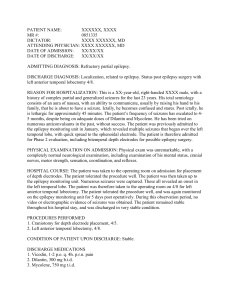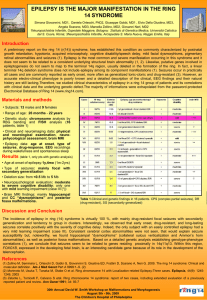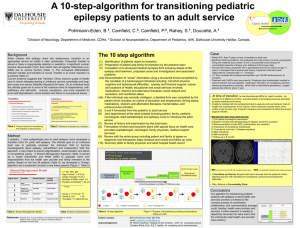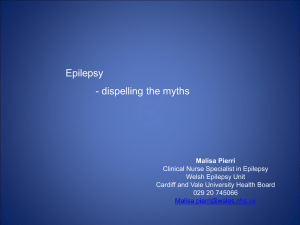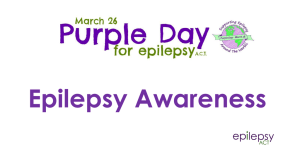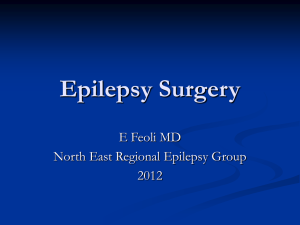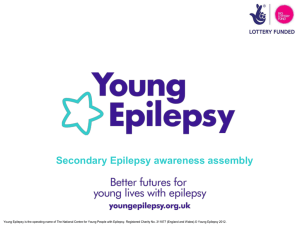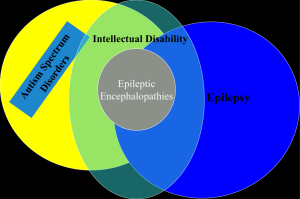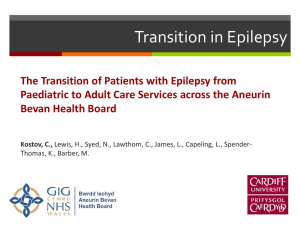INTRODUCTION - KPA Nairobi
advertisement
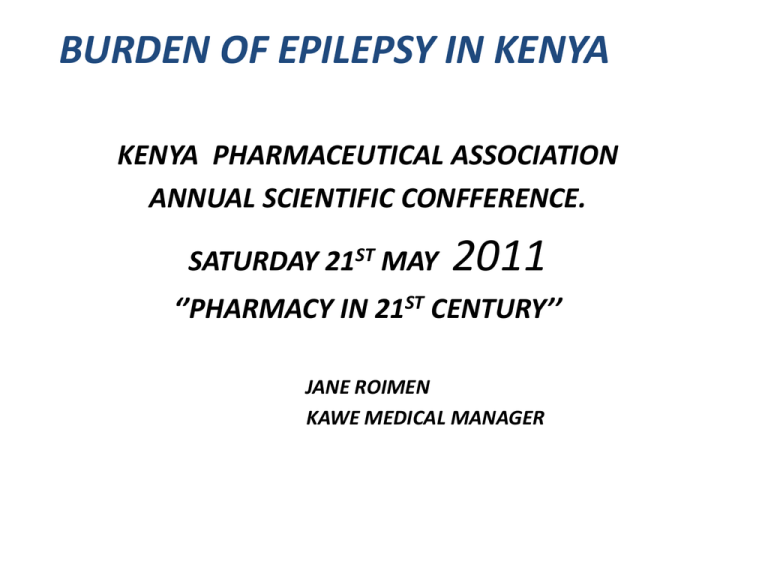
BURDEN OF EPILEPSY IN KENYA KENYA PHARMACEUTICAL ASSOCIATION ANNUAL SCIENTIFIC CONFFERENCE. INTRODUCTION SATURDAY 21ST MAY 2011 ‘’PHARMACY IN 21ST CENTURY’’ JANE ROIMEN KAWE MEDICAL MANAGER INTRODUCTION • Epilepsy is the most common chronic neurological disorder characterized by recurrent seizures. • Not all seizures are epilepsy. • Active epilepsy is where there has been two or more seizures with a year. • Seizures are a sign and symptom of brain disturbance. • has no age, racial, social, gender or geographical boundaries. Global Perspectives. • 10% of total world population experiences at least one seizure in normal life. • Approx.50 million people worldwide have recurrent seizures , of whom 40 million (80%)are estimated to live in resource poor countries . • Although 70% of all these can be treated to have seizure free lives, up to 80-90% of people with epilepsy do not receive appropriate treatment for their condition in low income countries. • Only 10 million of these receive treatment. Prevalence Prevalence • Rates of epilepsy range from 2.2 to 58 per 1000 in the African region • From many studies around the world it has been estimated approximately 8.2 per 1,000 of the general population. • Lowest is in South Africa • Higher in poor states due to poor health conditions Kenya’s situation • Epilepsy is a chronic and serious medical condition. • In Kenya today, an estimated 800,000 people suffer from Epilepsy. • Majority of these (over 80%) are in the rural and urban slum areas. • This translates to 2 out of every 100 Kenyan suffers from Epilepsy today. • 20 per 1,000 Kenyans have Epilepsy • In Kenyan a study done by Kaamugusha and Feksi in 1988 in a semi-urban area in Nakuru found a prevalence of 18.2 per 1,000 population, Kibwezi 10.2 children per 1,000 and Kilifi and 30 per 1000 respectively. Why High Rate? • Most of it is unknown- idiopathic • Predisposing factors include – Cerebral disorders – Communicable diseases – Peri -natal insults – Brain stressing factors – Road injuries Challenges in Epilepsy control. • • • • • • • • • • • High level of social stigma and negative prejudices. Poor attitude and traditional beliefs . Ignorance. Discrimination in employment and education. Traditional healers. Most patients tend to consult them first. Lack of resources. High poverty level. Lack of Policy within Government. Low priority Inadequate supply of AEDs. Poor drug compliance. Cost of drugs. Inadequate training of Medical Personnel. High rate of refractory seizures (30%) in children because of frequent brain damage, complex types of seizures and Syndromes. KAWE RESPONSE.(Kenya Ass. for the Welfare of People with Epilepsy). 1. TRAINING • Training all cadres of health personnel in epilepsy management 2.EDUCATION AND AWARENESS CREATION • To educate and empower various groups within the communities and their families. Ways of creating awareness. • Mass media campaigns. • Oral presentations at public gatherings, churches, schools, institutions etc. • Distribution of Educational and Information Material. 3.MEDICAL AND SOCIAL SUPPORT. Three clinics in Nairobi. Karen, Riruta and Mathare –Huruma. Way forward • Integrating epilepsy into the primary health care system. • Collaboration with other government sectors e.g. education, culture and social services • Commitment of resources to epilepsy activities. • Training of health workers to improve epilepsy management skills • Health facility support – drugs Conclusion • Epilepsy is one of the most common neurological disorder and has no age, racial, social, gender or geographical boundaries. • Epilepsy can have profound social, physical and psychological consequences. • In up to 70% of people, epilepsy responds to treatment, but in developing countries, 75% of people with epilepsy may not receive the treatment they need. • People with epilepsy continually face social stigma and exclusion. A fundamental part of ridding the world of this stigma is to raise public and professional awareness.
